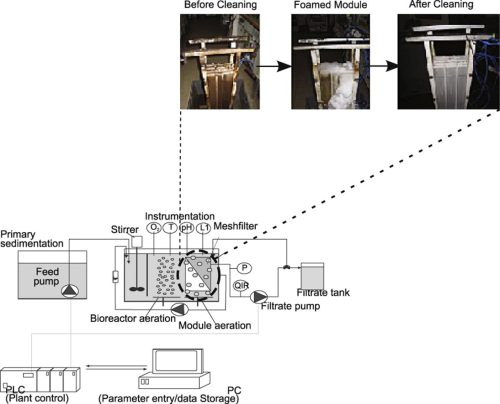
This Austrian study investigated the suitability of a new foam cleaning method for dynamic filtration modules.
Foam was produced from a commercially available cleaning agent in a foaming device constructed in-house.
Characterisation experiments proved the ability to produce foams of a defined quality and stability. In subsequent lab-scale cleaning experiments, the optimal cleaning parameters such as pH, incubation time, temperature, and NaOCl concentration were evaluated with image analyses of filter samples.
Based on these results, the best composition of the cleaning foam was chosen.
Foam from 5000 ppm NaOCl liquid solution (or ∼270 mg/L NaOCl foam volume) was successfully applied to clean a flat-sheet mesh-filter module established in a 500 L pilot plant.
Even after consecutive application, the initial filtration performance could be recovered after chemical foam cleaning. No difference in cleaning efficiency was observed compared to a reference method using a liquid cleaning agent.
This new foam cleaning method shows high potential for dynamic filtration processes, particularly at large scale, where Clean-In-Place (CIP) cleanings with liquid cleaner cannot be performed due to the large pore size of the filter.
Journal of Membrane Science, Volume 431, 15 March 2013, Pages 19–27.






